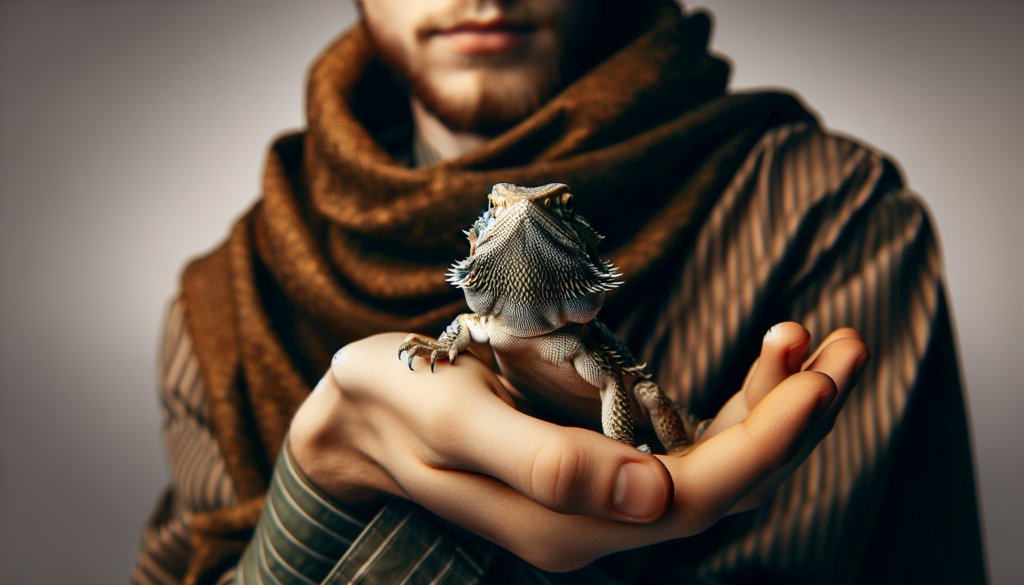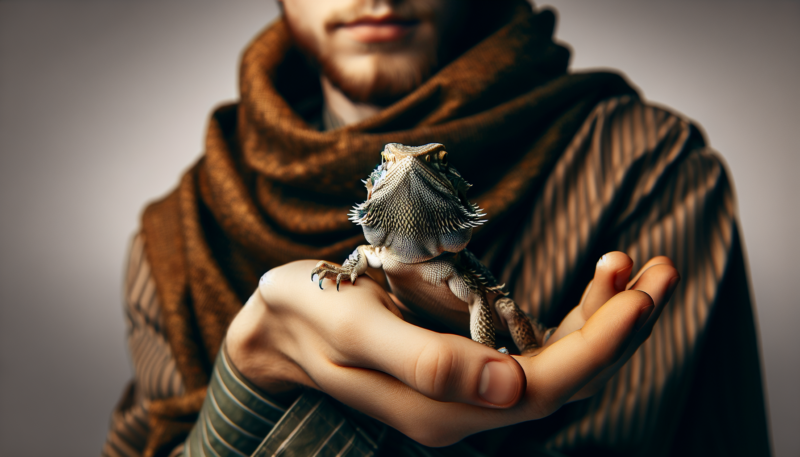Bearded dragons are fascinating reptiles that many people love to have as pets. But one question that often arises is whether or not they enjoy being handled frequently. Understanding their preferences and needs is crucial for providing them with a comfortable living environment. In this article, we will explore the topic of whether bearded dragons like to be handled a lot and delve into the factors that may influence their response to human interaction. By gaining insight into these fascinating creatures, you’ll be better equipped to provide them with the love and care they deserve.
Do Bearded Dragons Like To Be Handled A Lot?
Understanding Bearded Dragons
Bearded dragons, scientifically known as Pogona, are fascinating reptiles that are native to the arid regions of Australia. These captivating creatures have become increasingly popular as pets due to their unique appearance and gentle demeanor. To properly care for a bearded dragon, it is essential to understand their natural behaviors, preferences, and needs.
Natural Behavior of Bearded Dragons
In their natural habitat, bearded dragons are opportunistic omnivores that spend a significant amount of time basking under the warm sun. They have a preference for dry and rocky environments, where they can climb, dig, and seek shelter. Their solitary and territorial nature allows them to establish their own space, ensuring their safety and survival.

Interaction with Humans
As social creatures, bearded dragons are capable of forming bonds with their human caretakers. However, their level of socialization and preference for handling can vary from individual to individual. Some bearded dragons enjoy human interaction and thrive when properly handled, while others may prefer observing from a distance. Understanding your beardie’s preferences requires patience, observation, and respect for their boundaries.
Benefits of Handling
Regular handling can offer several benefits for both the bearded dragon and the owner. Handling helps the dragon become familiar with human touch and presence, which is particularly important for young dragons or those new to their environment. It also provides an opportunity for owners to monitor their pet’s health, observe any changes in behavior or appearance, and fulfill their need for mental stimulation.

Factors Affecting Preference for Handling
The preference for handling can vary from one bearded dragon to another, as they have distinct personalities. Factors such as age, temperament, previous experiences, and overall health can influence a bearded dragon’s receptiveness to handling. It is important to note that while some may enjoy affection and social interaction, others may feel stressed or uncomfortable if handled excessively.
Bonding and Trust
Building trust and a positive bond with your bearded dragon is crucial for a healthy relationship. This begins by respecting their boundaries and taking the time to understand their body language. To build trust, start with short handling sessions, gradually increasing the duration over time. Offering treats and gentle strokes along their body can help create a positive association with handling, contributing to a stronger bond between you and your bearded dragon.
Signs of Discomfort
While bearded dragons cannot vocalize their discomfort, they communicate through various visual cues and body language. Signs of discomfort may include color changes (such as darkening of the beard or puffing up), hissing sounds, tail twitching, or attempts to flee. It is essential to recognize these signs and immediately cease handling if they occur. This ensures that your bearded dragon feels safe and secure in their environment.
How to Handle Bearded Dragons
When handling your bearded dragon, it is crucial to create a calm and quiet environment to minimize stress. Begin by gently scooping them up with both hands, supporting their body and limbs. Avoid grasping their tail, as it can cause injury, and be mindful not to apply excessive pressure on their delicate bones. Always wash your hands before and after handling to prevent any potential transfer of bacteria or other harmful substances.
Handling Frequency
Finding the right balance in handling frequency is essential to the well-being of your bearded dragon. Younger dragons usually benefit from shorter handling sessions, gradually increasing the duration as they mature. Adult bearded dragons typically tolerate longer handling sessions, but it is important not to overwhelm them. Aim for at least two to three short handling sessions per week, but observe your beardie’s response and adjust accordingly to ensure their comfort and happiness.
Alternatives to Handling
While handling can provide valuable interaction, it is essential to offer your bearded dragon other forms of mental stimulation and enrichment. Providing a stimulating enclosure with branches, hides, and toys can keep them entertained and fulfilled. Additionally, offering a variety of appropriate foods, such as live insects and leafy greens, encourages natural foraging behaviors, promoting both physical and mental well-being.
In conclusion, the preference for handling among bearded dragons can vary, but many enjoy gentle human interaction when approached with respect and consideration for their individual needs. By understanding their natural behaviors, body language, and preferences, you can build a strong bond with your bearded dragon while ensuring their comfort and well-being. Remember, slow and steady wins the race when it comes to handling, and always prioritize their safety and happiness above all else.
